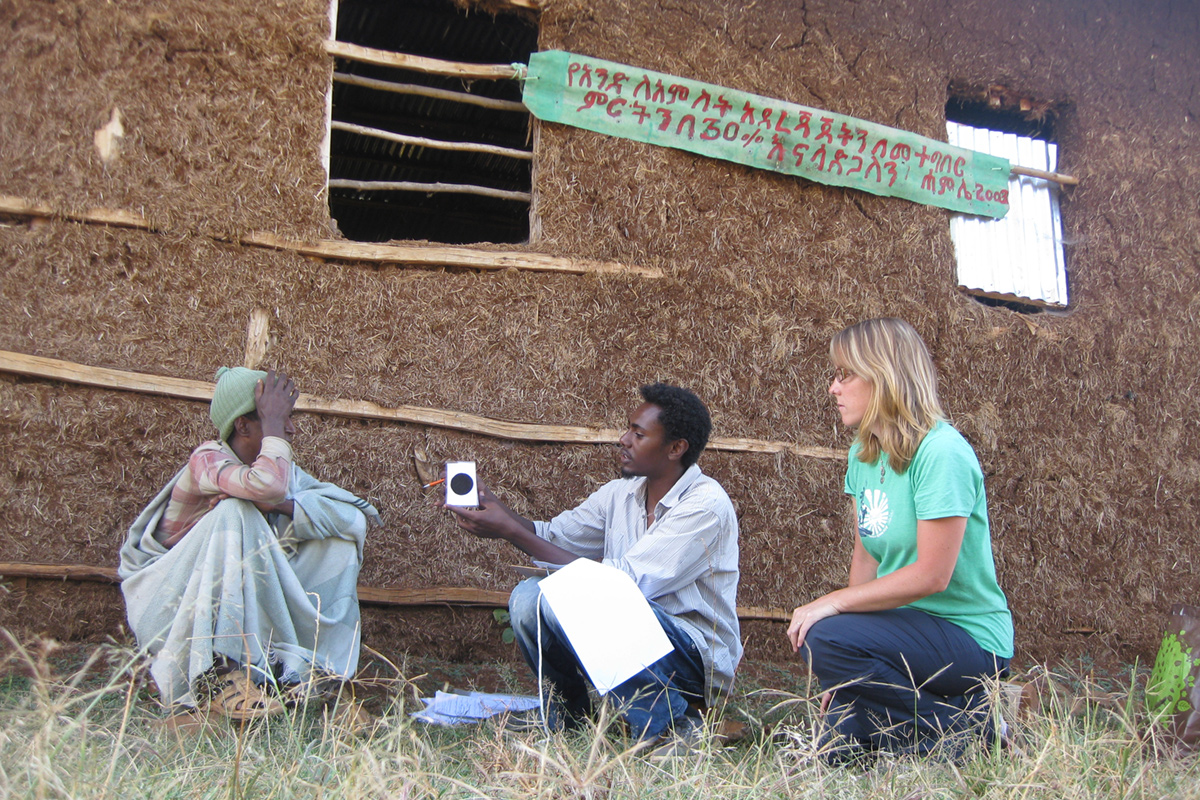Successful Delivery
Health workers and expectant mothers work as one in Ethiopia program

Courtesy Michelle Dynes
Birhane Simeneh suspected something was wrong when she began bleeding late in her pregnancy. But having been prepared for such a possibility, Simeneh, a forty-year-old mother of six who lives in rural Amhara, Ethopia, knew to seek medical care for the complication right away.
Her birth attendant mobilized neighbors and relatives to transport her to a local health post, where a health extension worker determined that her condition warranted emergency treatment at a nearby hospital. Simeneh later delivered a healthy baby by Cesarean section.
Simeneh had learned about the dangers of late pregnancy hemorrhage through the Maternal and Newborn Health in Ethiopia Partnership (MaNHEP), a program of the Nell Hodgson Woodruff School of Nursing and Ethiopia’s Jimma University. Lynn Sibley, associate professor of nursing at Emory, and Abebe Gebremariam Gobyzayehu, a faculty member at Jimma, lead the project.
Through MaNHEP, students and researchers from the two universities are creating a community-oriented model for improving maternal and newborn survival by working with pregnant women and frontline health workers. If everyone is working toward a common goal—such as safe delivery—they will not hesitate to engage with each other, says Emory doctoral nursing student Michelle Dynes 13G.
The model helps build knowledge and skills in the delivery of basic health care during the critical period from birth through the first two days of life, when mothers and newborns are most vulnerable. A separate four-year project is helping expectant and new mothers learn about the vitamins and minerals necessary for health.
These efforts have been supported with more than $12 million in grants during Campaign Emory, including $8.1 million from the Bill and Melinda Gates Foundation and $4.5 million from the Micronutrient Initiative. Today, six districts in the Amhara and Oromia regions are using the MaNHEP model.




